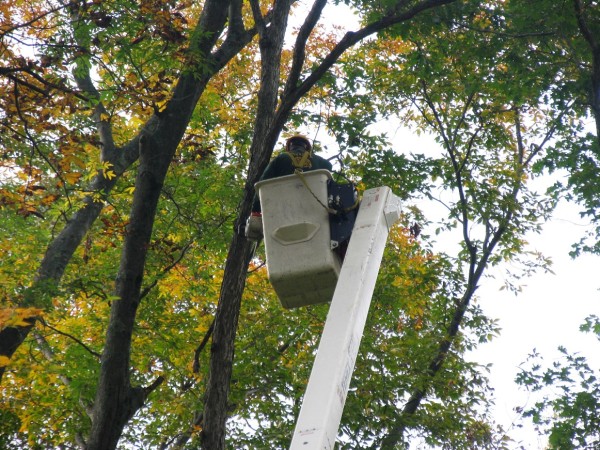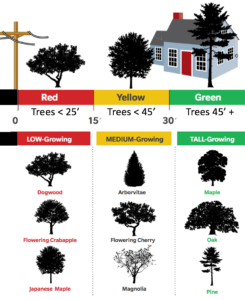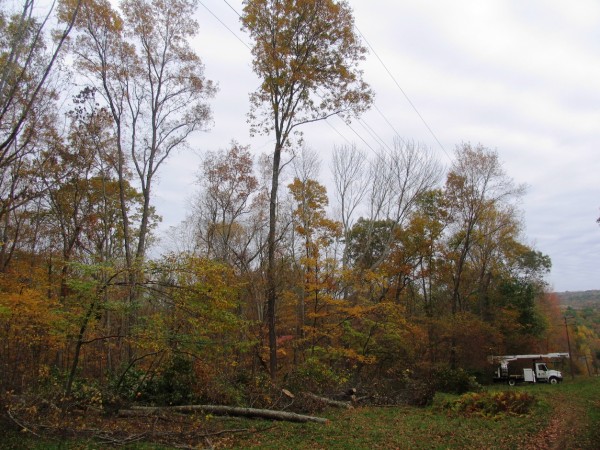A Partnership of UConn and Eversource
Eversource Energy Center
![]()
- Homepage
- >
- Tree & Forest Management
- >
- Stormwise Your Home
Stormwise Your Home
At the Eversource Energy Center, we are working together with Eversource and other utility companies to better predict potential storm damage, strengthen utility infrastructure, and reduce tree-failure risk.
Much of what we learn from our research into Roadside Tree and Forest Management, Wind and Trees, and Trees and People is helpful to homeowners and communities when making decisions about tree care and management.
Please read on for advice, suggestions, and information about tree risk near your home and in public spaces.
Advice and Suggestions: Tree Risk Around Your Home
Robust, healthy shade trees around your home provide numerous benefits, including:
- Temperature moderation
- Rain intensity reduction
- Visual Aesthetics
- Bird and other wildlife habitat areas
- Increased property value
- Privacy enhancement
Growing trees that are healthy is the first step in reducing risk of tree failure:
- Trees with plenty of space to grow are healthier trees. Avoid planting close to buildings, wires or other structures.
- Avoid planting trees too close to each other. Leave plenty of space for root and crown development.
- Maintain a suitable root environment. Try to avoid excavating in root zones, or conversely, burying established roots with extra soil or excessive mulch.
The overall appearance of a tree is a key indicator of its condition:
- During the growing season does it develop a full crown of well-formed leaves or needles?
- Is it shedding bark, twigs or branches?
- Is the color robust?
Remove trees that present serious risks:
- To assess risk, first ask:
- Is the tree likely to fail? Failure potential indicators include:
- Excessive lean
- Indications of rot or decay
- Dead branches and limbs
- Large cavities
- Splits in trunk or at branch forks
- Is the tree likely to fail? Failure potential indicators include:
- Next, assess:
- If the tree should fail, is it likely to strike something important or valuable?
Is your home near the edge of the woods? Some questions to consider:
- Are trees leaning toward your home or wires?
- Do trees at the edge have space to grow on all sides?
A licensed Arborist or Certified Forester can help you to assess tree conditions.

Member of an arborist crew is working on tree trimming. Notice his hard hat, hearing protection, harness and other personal safety equipment

The tree species, especially the expected height at maturity, should be considered when planting around the home or utility wires.

This healthy-looking edge tree is still within striking distance of the wires, but has been provided with space all around it to grow and develop wind-firmness.

|
Team Information
|
Thomas Worthley, Associate Extension Professor, University of Connecticut |
|
Nancy Marek, Research Forester, Graduate Research Assistant, Department of Natural Resources and the Environment, University of Connecticut |
|
Anita Morzillo, Assistant Professor, Department of Natural Resources and the Environment, University of Connecticut |
|
Robert Fahey, Assitant Professor, Department of Natural Resources and the Environment, University of Connecticut |
|
Dr. John C. Volin, Vice Provost for Academic Affairs & Professor in the Natural Resources and the Environment department, University of Connecticut |
Contact Information
|
For more information, please contact Thomas E. Worthley, Associate Extension Professor |
Eversource Energy Center | Innovation Partnership Building: 159 Discovery Drive, Unit 5276, Storrs, CT 06269-5276 | E-Mail: eversourceenergycenter@uconn.edu